How to Set Up Your Sled’s Suspensions
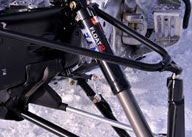
Tips for dialling in your sled to achieve that perfect ride
Many snowmobilers aren’t getting the best ride their sled can give them, because way too many riders automatically assume that the dealer set up is the “right” set up.
In reality many sleds on the trail do not have their suspensions set up properly for the owner’s specific riding style. If you ask many riders a question about their suspension, the reply is often “It came from the dealer this way.”
Indeed, it did. But when Snowmobile.com interviewed several dealers on this issue, they had quite a different view, “We leave the suspension set ups to the owner, we don’t know how they ride, so we leave the suspension the way it came from the factory.”
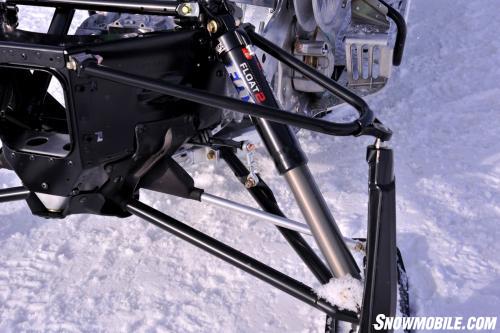 FOX FLOAT 2 shocks come stock on many new OEM sled models.
FOX FLOAT 2 shocks come stock on many new OEM sled models.Obviously not all owners or dealers are as haphazard with set up. After all, your sled’s suspension set up is an important matter of choice. As an example, we recall a conversation with a veteran rider who expressed dismay with other riders who took to badmouthing the ride of his favorite sled brand. He said that he had been riding one day when he came across a group of other riders, quite unhappy riders. They complained about their sleds’ ride. Since those sleds were the same as his, he couldn’t understand why they were so angry. His sled rode great.
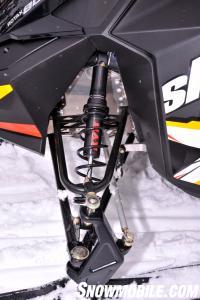 Ski-Doo MXZ has pre-load numbering, making it easier to match both sides!
Ski-Doo MXZ has pre-load numbering, making it easier to match both sides!He even let a couple of the other riders try his sled for comparison. After their rides they seemed more angry. Why didn’t their sleds ride like his? After a quick test ride of their sleds, our friend understood what was happening. None of these riders had made any suspension set up changes. Most of the settings were totally off the mark for the conditions. So, explaining this, he helped them make the necessary changes. Once they achieved proper set up, all those angry riders found that they actually liked their sleds.
Unfortunately, this story is all too true. So many riders simply do not take time to figure out their own set ups. They just hop on and go riding. As snowmobilers, we can understand this excitement of “just go riding,” especially after the first snowfall!
But the proper set up will improve your time on the trails and enable you to get the best ride possible from your sled.
Snowmobile.com recently took the opportunity to talk suspension set ups with Adam Robinson, an expert in the world of motocross and snocross suspensions. He has spent the past decade of snocross seasons travelling with Factory Teams like RydeFX, Scheuring Speed Sports, Amsoil Team and OTSFF Race Team. We had the opportunity to discuss sled suspensions and the proper set up for both racing and today’s trail riding.
The following “Q & A” reflects Robinson’s suggestions for suspension setups.
Basic Set Ups
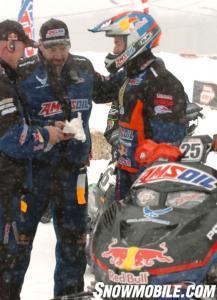 Scheuring Speed Sports Amsoil Team on the podium.
Scheuring Speed Sports Amsoil Team on the podium.Snowmobile.com: Ok, where do you start?
Adam Robinson: The first consideration is shock springs. The OEMs do a great job for 75% of the riders. The other 25% includes lightweights and heavyweights. If you can’t set the appropriate pre-load on your suspension, it will never work properly. For example: If a heavyweight rider has the spring settings in the stiffest position and the sled is still sagging too far down, the fix is the rider will need to upgrade to a stiffer set of springs. The OEMs have a range of springs available for different suspension set ups.
SC: What do you mean by pre-load?
AR: That is a term used to describe the spring adjustments for the proper ride height. Even today’s economy sled models have adjustable spring positions or pre-load that gives individual riders the option to accommodate their weight and riding ability.
SC: After you have the pre-load set, what next?
AR: Pick out a block of time in order to make some adjustments, make notes for each step of the way. Ride the sled through a particular section with the stock settings – on most premium sleds there is a compression setting adjustment on the bottom of the front shocks. Before you make any adjustments, though, find the stock setting by counting the number of clicks all the way in, record that number, and return it to the stock setting. The next part is trial and error with adjustments of NO MORE than two clicks at a time. Test ride and record the results. These test rides should be over the same terrain on the same day.
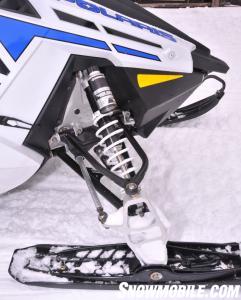 This Polaris set-up is goof proof; the clicker has a directional arrow for hard and soft.
This Polaris set-up is goof proof; the clicker has a directional arrow for hard and soft.SC: What type of reaction do you look for in the front?
AR: If the front is too soft it will bottom too easily and roll in the corners. If the front is too hard the suspension will not have enough travel and will send too much feedback to the rider. There is a balance here, which each individual will call perfect.
SC: There has been a lot of talk about the front, what about the rear?
AR: Absolutely, but remember the front is always done first and once you are happy with the front adjustments, then you move to the rear. The rear suspension generally has two shocks and torsion springs. Just as with the front, set the springs first.
First you measure from the rear bumper to the ground then measure with the rider in full gear and position in the same location. There should be a drop of 1 to 1 ¼ inches with the rider on the sled. This is called “rider sag,” and once you have achieved the rider sag, you can move to the front rear shock. This shock is the most forgotten yet the most important. This shock does the majority of the work in the rear suspension. It takes all of the hits from bumps first, and it also controls weight transfer contributing to bite/traction on acceleration. Weight transfer is very important for corner-to-corner acceleration because the skis need to be on the ground. If the sled is wheeling on acceleration, there is another adjustment: the limiter straps can be tightened up one notch. Remember to make only one adjustment at a time and test ride every adjustment, making notes as you go along.
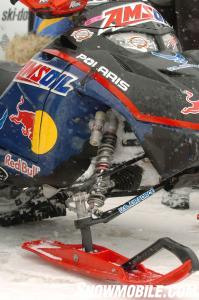
SC: Is there a standard set of adjustments that anyone can use?
AR: No, these adjustments are individual and are a personal preference. Besides, the OEM stock settings are for the middle of the road, you can make your personal settings based on the OEM’s settings, but many prefer their own.
SC: What about a new sled? Can a new rider get a head start on suspension adjustments?
AR: The only thing that they can set is shock spring pre-load, after that the best thing for a new sled is to ride it and experience the stock settings. Later on you can change, but always use the stock settings as a guide.
Advanced Set Ups
Higher end performance sleds all come with premium shock packages; most of these are rebuildable and loaded with adjustments.
First, a note on rebuilds; our research has shown that this very seldom happens. Shocks should be, at the very least, taken apart and cleaned, with fresh oil added and be recharged with nitrogen every two years or every year on a high mileage sled or one that has been ridden really hard.
Now for some adjustments. Some shocks have High Speed Compression damping (HSC) and Low Speed Compression damping (LSC). The difference between these two adjustments is; low speed is for small trail bumps, while the high speed is for; you guessed it, big spine tinglers! During our interview with Robison, he made a point that these compression settings really do change the characteristics and handling of the sled. Once the HSC and LSC are dialled in for a racer, he leaves it alone. He spends most of his time changing the springs and dialling in pre-load.
There are also rebound adjustments. This setting controls the rate of extension of the shock or how fast the shock comes out after being compressed. All of these settings make a difference, so as previously mentioned, take notes to keep track of where you have been and keep track of where you are going.
New Shock Purchases
If you are considering a new or aftermarket shock purchase, you should really look into the support service that goes along with the shocks. This is critical. Robinson recommends FOX Shocks, because as he explains, “They really extend themselves to the consumer.”
FOX Shocks have been standard equipment on many performance models of both Arctic Cat and Yamaha snowmobiles for several years. They have several models that range from trail, cross-country and snocross race shocks, so whatever your needs, Fox is a worthy consideration.
Ride smooth and ride safe!
Related Reading Living With Air Shocks Carver Performance: Shock Tuner Extraordinaire Mountain Tech: Snowmobile Suspensions and Steering Posts 2012 Ski-Doo rMotion Rear Suspension Preview



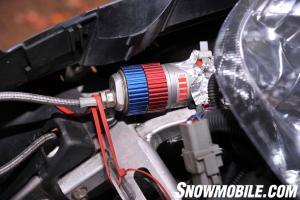 Here is a close look at a race shock remote reservoir from RydeFX, the blue dial is LSC and the red dial is HSC.
Here is a close look at a race shock remote reservoir from RydeFX, the blue dial is LSC and the red dial is HSC.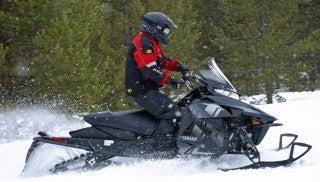
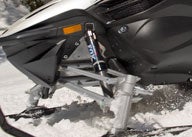
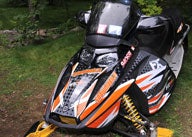


 Your Privacy Choices
Your Privacy Choices